Shipyard Employment eTool
General Working Conditions >> Housekeeping
Good housekeeping is important in preventing injuries caused by trips, slips, and falls on slippery decks or cluttered walking and working surfaces. Poor housekeeping can block exits and access to emergency equipment. Failure to remove trash and other debris increases the risk of a fire.
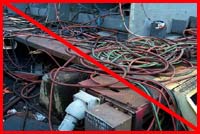
Potential Hazard
Cluttered work areas can lead to accidents and cause worker injuries, due to slips, trips, and falls, being struck by falling objects, impeded access to exit routes and firefighting equipment, and fires because of improper disposal of flammable/combustible materials (such as rags, paper, cardboard).
Requirements and Example Solutions
Good housekeeping conditions must be maintained to the extent practicable.
- Eliminate slippery conditions, such as snow and ice, on walkways and working surfaces (29 CFR 1915.81(a)(2)). Where this is not possible, the following alternatives may be implemented:
- Provide designated walkways and working surfaces where slippery conditions have been eliminated (29 CFR 1915.81(a)(2)(i)); or
- Provide slip-resistant footwear in accordance with 29 CFR part 1915, subpart I (29 CFR 1915.81(a)(2)(ii)).
-
Store materials in a safe manner that does not create a hazard for employees (29 CFR 1915.81(a)(3)) by:
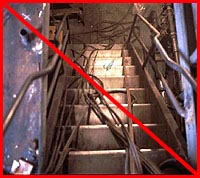
- Maintaining easy and open access to each fire-alarm box, fire-call station, fire-fighting equipment, and each exit, including ladders, staircases, scaffolds, and gangways (29 CFR 1915.81(a)(4)).
- Properly disposing of flammable and combustible substances (paint thinners, solvents, rags, scrap, and waste) or store them in covered fire-resistant containers.
-
Each walkway must:
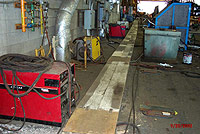
- Have adequate passage (29 CFR 1915.81(b)(1)(i));
- Be clear of debris, including solid and liquid wastes (29 CFR 1915.81(b)(1)(ii));
- Be clear of tools, materials, equipment, and other objects (29 CFR 1915.81(b)(1)(iii)); and
- Be clear of hoses and electrical service cords (29 CFR 1915.81(b)(1)(iv)).
-
Each working surface must:

- Be cleared of additional tools, materials, and equipment that are not necessary to perform the job in progress (29 CFR 1915.81(c)(1));
- Be cleared of debris, including solid and liquid wastes, at the end of each workshift or job, whichever occurs first (29 CFR 1915.81(c)(2)); and
- Be maintained, so far as practicable, in a dry condition (29 CFR 1915.81(c)(3)).
-
During wet processes, maintain drainage and use false floors, platforms, mats, or other dry standing places the avoid workers being exposed to standing water. When such accommodations are not practicable, each employee working in the wet process must be issued protective footgear, in accordance with 29 CFR part 1915, subpart I. (29 CFR 1915.81(c)(3))
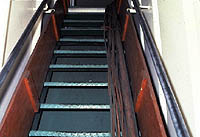
-
To prevent potential injuries to workers or damage to hoses and cords, the following precautions must be taken:
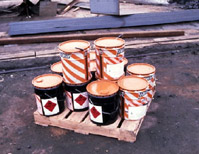
- Cordon off portions of walkways, where work is being performed, to prevent it from being used as a walkway (29 CFR 1915.81(b)(2)); and
- Keep each hose and cord free from contact by either placing them underneath (e.g., crossovers) or above walkways (e.g., shielding) (29 CFR 1915.81(b)(1)(iv)(A), (B), & (C)).

